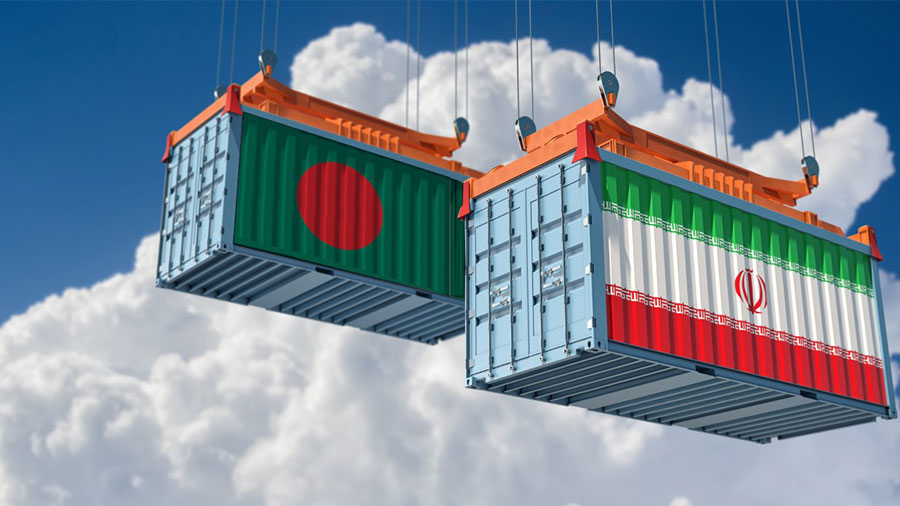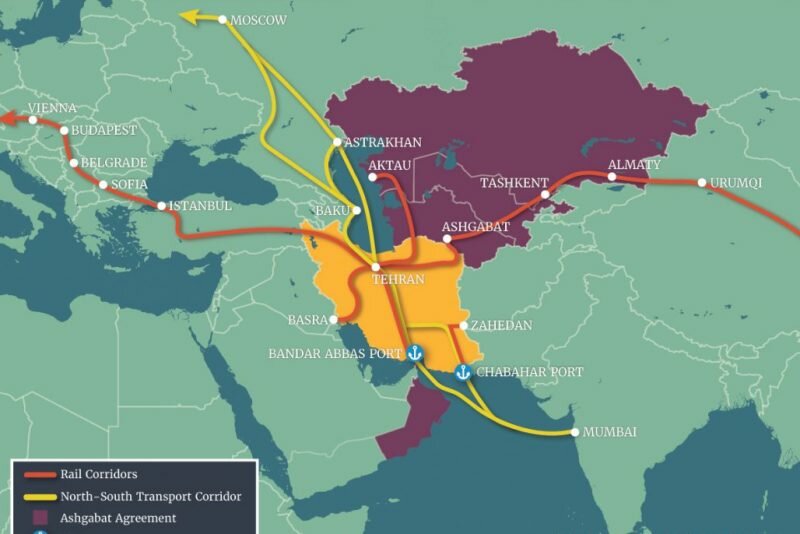Iran’s Chabahar Port And Bangladesh’s West Asian Reconnection Opportunity

By Pathik Hasan
For decades now India has made requests to Pakistan concerning the provision of overland transit facilities to markets in Iran and beyond, in return for the millions of dollars Islamabad would earn in transit fees. Pakistan has never agreed.
India has subsequently obtained an alternative route throughout the multi-modal INSTC which provides shipping services from Mumbai to Iran’s Chabahar Port and bypasses Pakistan altogether.
This is the restitution of a natural route. Prior to the partition of India into Pakistan and Bangladesh in 1947, India, Iran and Afghanistan were immediate neighbours of India for thousands of years. All three countries have very strong historical, cultural, and civilizational bonds. There should be no reason to fear the resumption of these links.
Chabahar port is located in the Gulf of Oman, near Iran’s border with Pakistan. It is Iran’s only major oceanic outlet lying beyond the Straits of Hormuz and provides direct access to the Indian Ocean. It connects to Afghanistan at the Zaranj-Deleram highway. The port serves as the nearest port entry, after the Pakistani ports at Karachi and Gwadar, for India into Central Asia.
India and Iran both have strong economic links between each other. As Iran and India developed ties and strong relations, Iran made significant oil deals with India and is now its second-largest supplier of crude oil, meaning Iran is important to India’s economic interests. In turn, India has invested heavily in Iran’s infrastructure, including the Zaranj-Delaram highway through to Western Afghanistan. That will become, should the Afghanistan situation settle down, an integral part of China’s Belt and Road Initiative network in terms of directly connecting with it.
India also uses Iran’s Chabahar port to compete with the Chinese-funded Gwadar port in Pakistan. India’s strong economy, with GDP growth estimated to be 9.6% this year, will assist Iran after US-sponsored economic sanctions effectively crippled the country.
India’s Chennai, Kandala and Mumbai ports are all connected with Iran’s Chabahar port, which coupled with the International North South Transit Corridor (INSTC) will be able to utilize connectivity through Iran, Afghanistan, the Central Asian States, Russia, and Europe.

It is already operational. India sent 75,000 tonnes of wheat as humanitarian food assistance to Afghanistan last year via Chabahar and assisted Iran in fighting its worst-ever locust invasion by supplying 25 tonnes of Malathion, an insecticide, in June 2020.
Chabahar is therefore very important for expanding the trade in the region, and has particular resonance for Indian traders and merchants to export their goods to CIS countries and Europe. The Iran customs administration has made all infrastructure ready to facilitate trade and transit in the corridor. There is also an impact for Bangladeshi exporters.
Bangladesh’s Chittagong and Mongla ports are connected with India’s ports. Bangladesh can utilize Iran’s Chabahar port via Indian ports to join the INSTC, meaning that Bangladesh connectivity is synonymous with its trade development.
According to Iranian media, the Ambassador of Bangladesh in Tehran said in a visit to Chabahar Port that the relations between the Iranian and Bangladeshi merchants and investors can help develop trade in the South Asian region. He mentioned that Bangladesh is willing to promote shipping from Bangladesh to Iran, meaning there are huge possibilities and potential for Bangladeshi investors and traders to look into and exploit this connectivity.
Bangladesh’s Foreign Minister Shahriar Alam visited Iran three days ago to attend the swearing-in ceremony of newly elected President of Iran Ebrahim Raisi and held additional meetings concerning trade potential. Minister Alam emphasized the importance of increasing connectivity and private sector cooperation in trade and investment between the two countries, including LNG imports from Iran, a source of clean energy for Bangladesh.
This connectivity will also boost interregional cooperation in Central and South Asia, if Bangladesh utilizes the INSTC, it will increase its strategic significance. Knock on effects will mean that Russian and Central Asian countries such as Uzbekistan would become more interested to invest in Bangladesh. Russia has already invested in the Rooppur Nuclear Power Plan on the banks of Bangladesh’s Padma River, 90km west of the capital, Dhaka.
Bangladesh wants to be connected regionally and globally. Iran’s Chabahar port creates significant opportunities for Bangladeshi businesses. Now it time for the Bangladesh business community to be involved – and to be reconnected.
We are grateful to Pathik Hasan for contributing this article. Dr. Hasan is a Dhaka based NGO worker, and freelance writer commenting on current affairs and international politics. He can be contacted at pathikhasan1141@gmail.com
Related Reading
About Us
Silk Road Briefing is written by Dezan Shira & Associates. The firm has 28 offices throughout Asia, and assists foreign investors into the region. For strategic advisory and business intelligence issues please contact the firm at silkroad@dezshira.com or visit www.dezshira.com





